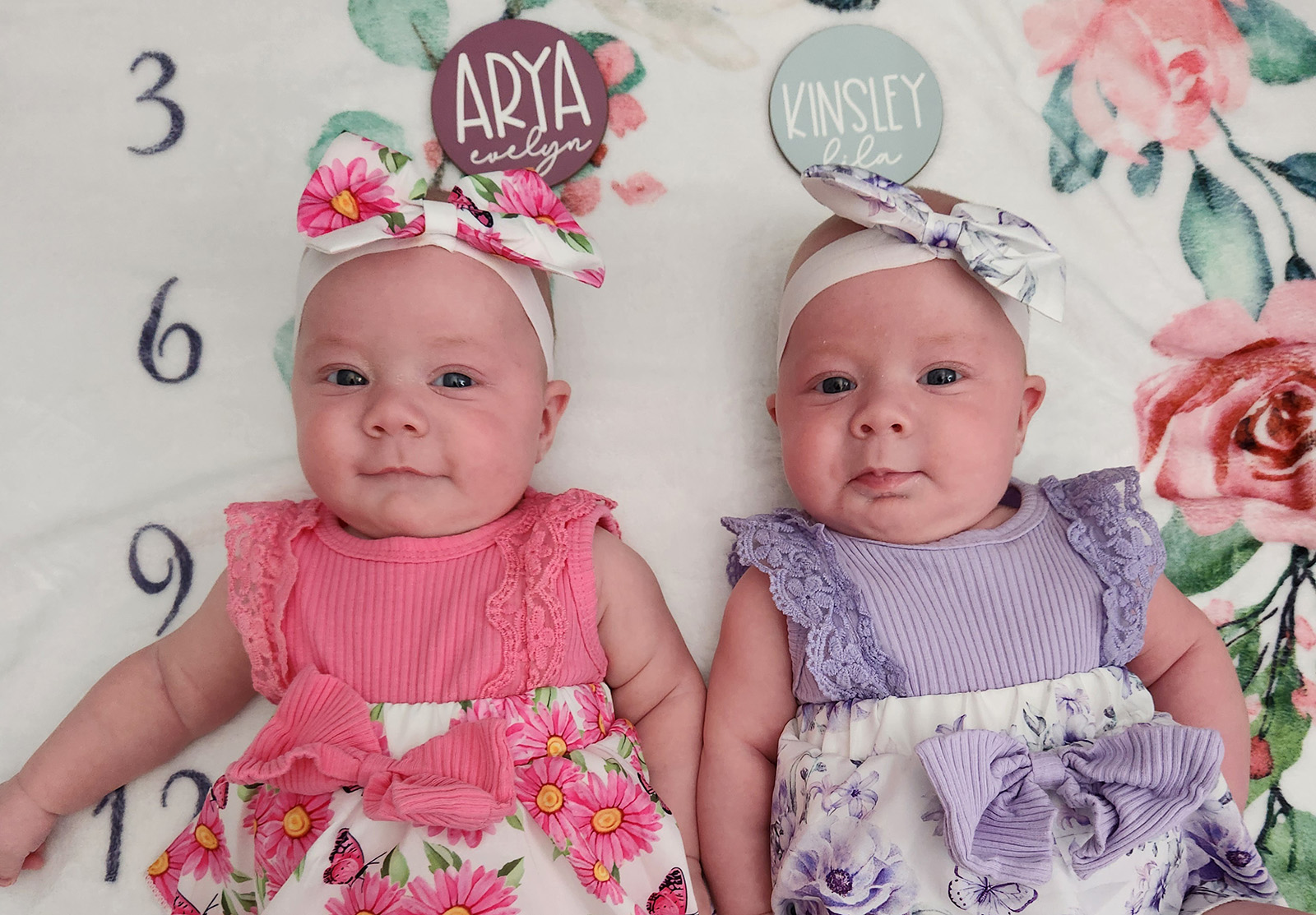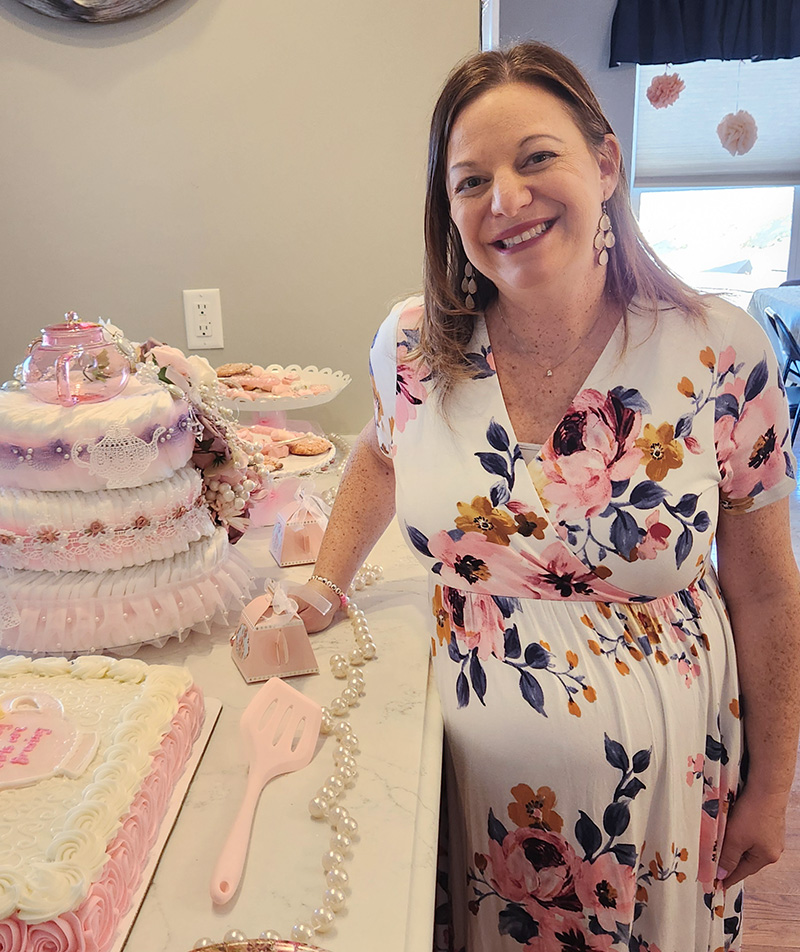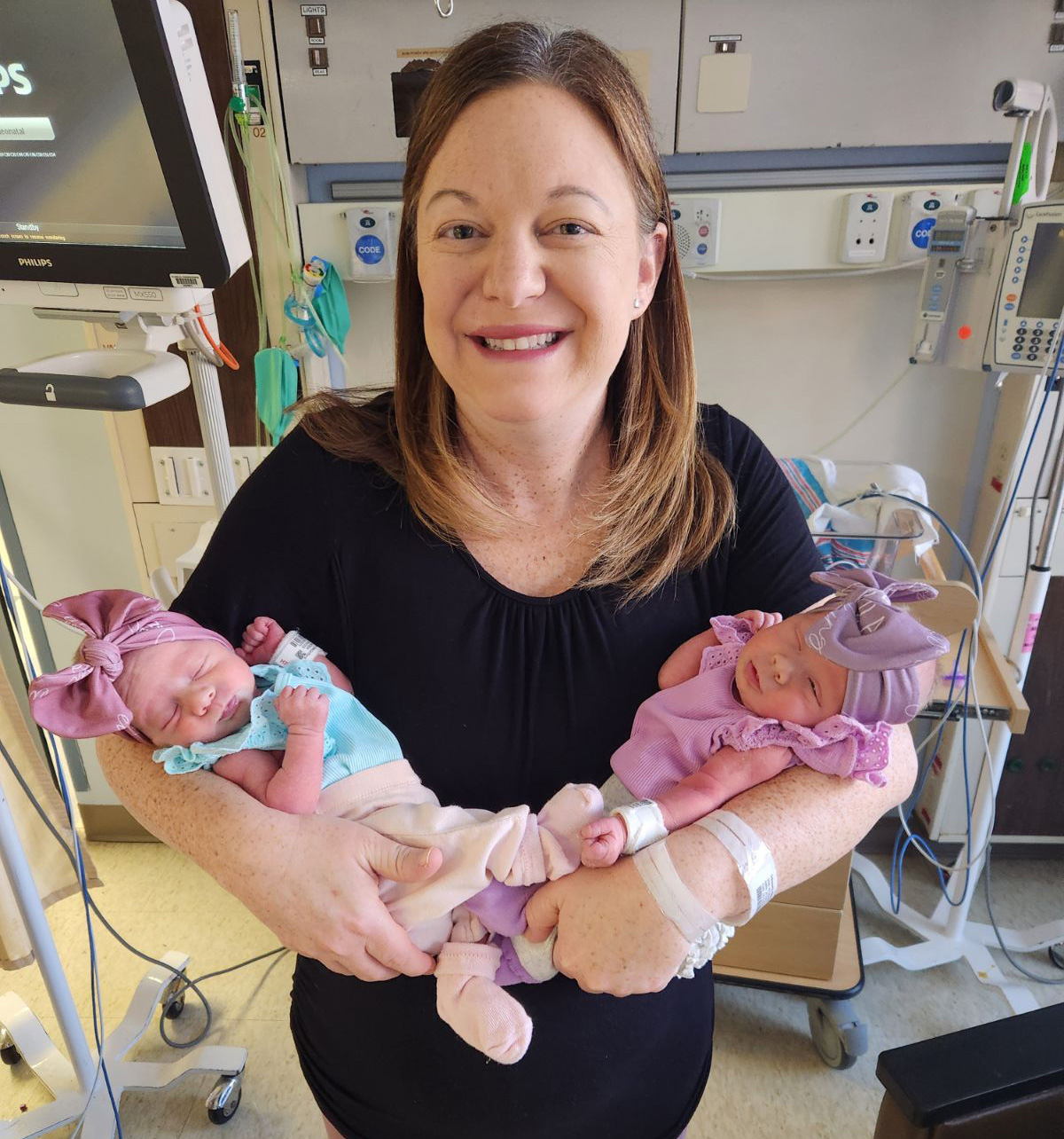Lifesaving laser surgery helps identical twins — before they’re born

Last year, St. Louis mom Sara Schwartz discovered she was pregnant with not one but two babies –– identical twin girls. Schwartz, who was already a mother of three (to children ages 12, 11 and 9) felt excited about her “bonus babies” on the way, despite it being a high-risk pregnancy.
The good news wasn’t without a complication. Early in her pregnancy, Sara and her husband, Stephen Schwartz, learned that the babies were sharing a placenta and had to be monitored to ensure they were growing and developing at the same pace. Sara started to receive co-managed care by Missouri Baptist Medical Center-affiliated providers. Her primary obstetrician, Jennifer Smith, MD, a Washington University Clinical Associates ob/gyn at Consultants in Women's Healthcare, and BJC Medical Group maternal-fetal medicine specialist Michael Paul, MD, who consults on high-risk pregnancies at Missouri Baptist Medical Center, watched her closely.
“The doctors told me about the risks of both babies sharing a placenta and that there was the possibility of me developing twin-to-twin transfusion syndrome or another condition,” Sara says. Twin-to-twin transfusion syndrome (TTTS) is a potentially life-threatening condition for the fetuses in which one twin receives more blood and nutrients via the blood vessels in the placenta. “I was being seen by one of the doctors every two weeks, and everything had been going smoothly,” Sara says.
However, right after the winter holidays, one appointment changed everything.
“I could tell right away there was something wrong,” Sara remembers. At her 17-week appointment, she recalls how the sonographer was interested in the area around the babies’ bladders during her ultrasound. Once she was back with Dr. Smith, the doctor told Sara that the ultrasound had revealed that the fluid levels in the amniotic sac were different now. “Baby B seemed to have a whole lot of fluid, like a swimming pool,” Sara remembers. “Baby A hardly had any fluid. Baby A kind of looked like she was shrink-wrapped, and they couldn't see her bladder. And that is oftentimes indicative of twin-to-twin transfusion.”
how the sonographer was interested in the area around the babies’ bladders during her ultrasound. Once she was back with Dr. Smith, the doctor told Sara that the ultrasound had revealed that the fluid levels in the amniotic sac were different now. “Baby B seemed to have a whole lot of fluid, like a swimming pool,” Sara remembers. “Baby A hardly had any fluid. Baby A kind of looked like she was shrink-wrapped, and they couldn't see her bladder. And that is oftentimes indicative of twin-to-twin transfusion.”
Katherine Bligard, MD, a WashU Medicine maternal-fetal medicine specialist at Barnes-Jewish Hospital and St. Louis Children’s Hospital who cared for Sara at the Fetal Care Center, explains that because of the difference in the placenta’s blood vessel connections, Baby A was dehydrated and Baby B was overly hydrated. “Amniotic fluid is baby's pee,” Dr. Bligard says. “So if a baby's dehydrated, they're going to pee less, and so they make less amniotic fluid. Both dehydration and overhydration can make babies very sick in the uterus.”
Risks for fetuses with TTTS include organ failure and heart complications, and it can be fatal for one or both babies if there’s no medical intervention. With TTTS, quick intervention is critical following detection.
The next day Sara was sent to the Fetal Care Center for another, more in-depth scan, which confirmed her twins had TTTS. Luckily, there was a procedure that could help: a minimally invasive laser ablation surgery done while the babies were still in utero. The Fetal Care Center is the only provider in the St. Louis region that offers laser intervention for babies with TTTS. This early intervention can make a significant impact and be life-saving, especially because the condition can progress quickly — two weeks earlier, Sara’s amniotic fluid had looked normal. Sara and Stephen knew that time was of the essence.
The couple weighed their options and decided that their goal was two healthy babies. Sara would move forward with the laser ablation surgery the morning after her diagnosis.
Sara’s surgery was scheduled for 17 weeks and five days gestation at Barnes-Jewish Hospital. Dr. Bligard explained that during the procedure, she would make an incision in Sara’s abdomen and insert a camera into the bag of fluid that surrounded Baby B, the twin who had more amniotic fluid.
“We look with a camera at the placenta to see those blood vessels, and we use a laser to seal off the ones that communicate between the two babies so that the sharing of blood is no longer possible,” says Dr. Bligard.
Within 24 hours after the surgery, the doctors would know if the surgery was successful based on the fluid collecting around the babies. In the days and weeks following the surgery, doctors should be able to see both babies growing, signaling the procedure’s continued success.
Dr. Bligard says that recovery from the laser ablation isn’t too taxing for pregnant mothers. Patients stay at Barnes-Jewish Hospital in the antepartum unit for 24 to 48 hours so they and their babies can be monitored closely. After surgery, moms are restricted from activities that involve heavy lifting or anything too vigorous.
On the morning of her surgery, Sara appreciated how her medical team made her feel well cared for. “We arrived, and a whole team of people was ready for us,” Sara says. “They were so thorough in explaining everything that was going to happen and what was going on. They did it all so quickly, too.”
Before Sara was taken to the fetal care operating room, Stephen whispered to Baby A: “If you survive this surgery, I call dibs on naming you.”
Twenty-six. That’s the number of shared blood vessel connections between Sara’s twins that the Fetal Care Center team was able to ablate, “which is an amazing amount, a huge number,” says Sara. After the procedure, Dr. Bligard assured Sara and Stephen that the surgery had gone as well as possible, but as welcome as that news was, the couple still had a difficult day ahead of them. Sara and Stephen still had to wait 24 hours after the surgery to ensure both of their babies still had heartbeats. The agonizing wait was practically unbearable, so the parents requested updates before the 24-hour mark.
“It was a 7 a.m. surgery, and the medical care team came in that evening — 12 hours later — and said there were still two heartbeats, but that they didn’t want to give any false hope,” Sara remembers.
Finally, after 24 hours, Sara and Stephen were told that both babies still had heartbeats. The couple was overjoyed.
Sara remembers that Dr. Bligard told her she wouldn’t consider the surgery a full success “until we actually delivered the babies.” After she was discharged from Barnes-Jewish Hospital, Sara was co-monitored by Drs. Smith and Paul every week until 32 weeks and five days gestation, when Sara and Stephen’s identical twin daughters, Arya and Kinsley, were born to a grateful mom and dad via C-section at the Childbirth Center at Missouri Baptist Medical Center. The twins stayed in Missouri Baptist Medical Center’s level 3 newborn intensive care unit for three weeks, and today they are thriving.
As promised, it was Stephen who named Baby A, the twin who Sara and Stephen worried wouldn’t survive the surgery.
“Her name is Arya,” Sara says. “It’s after a Game of Thrones character. Arya…a little warrior name.”

- Patient Story